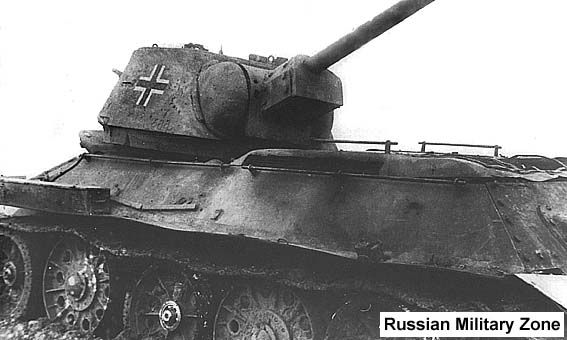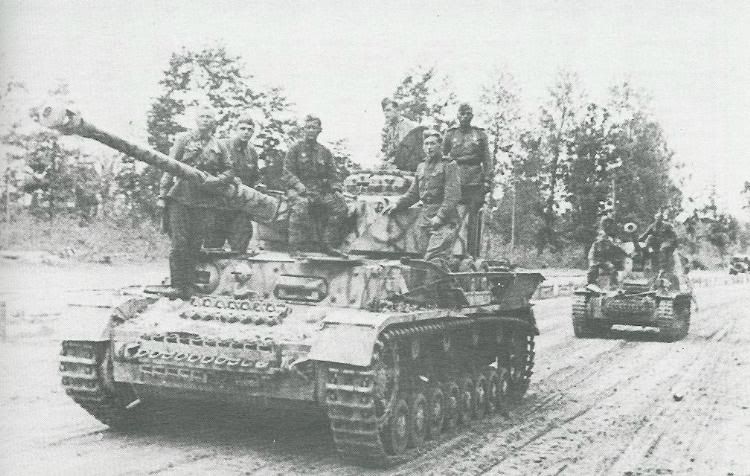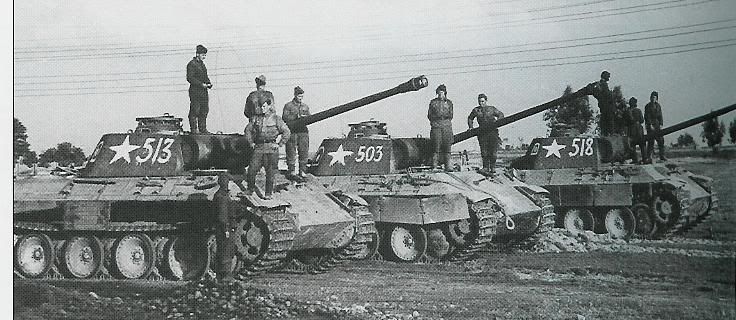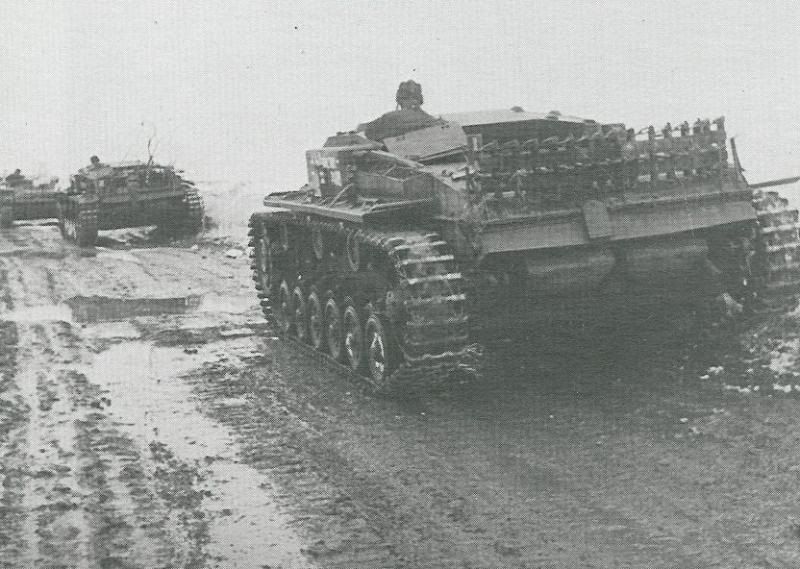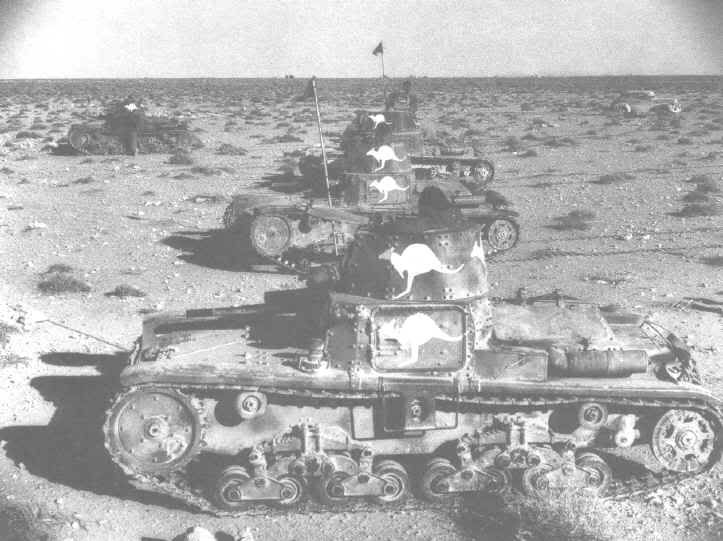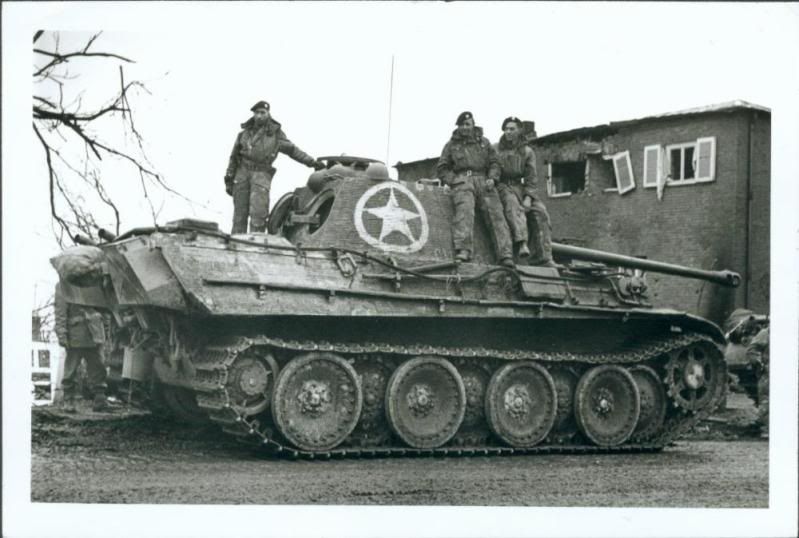Reading about armoured warfare during WWII has always fascinated me, and recently I have come to wonder a bit about the underlying thoughts and principles of tank development in various countries. There seems to be lines of thinking, conscious or not, that drags development in one direction or another within one country - for better or worse. They are often discussed in the context of one vehicle or a comparison of two, but not so often in a broader sense.
Having browsed these forums I felt that perhaps it would a nice place to share some of my thoughts and hopefully get a slight bit of criticism and response.
Im going through country by country, trying to keep a light and somewhat humurous touch - not to be mistaken as lack of respect of the brave soldiers, engineers and workers of the time.
Germany
We love heavy metal!
The first thing that struck me about this subject is the enormous increase in weight of German AFV:s during the war. Granted, thats part of a major trend at the time towards heavier armour and bigger guns. But something tells me that Germany was the biggest proponent of that development. Look at the Tiger, Panther, Elefant, King Tiger, Jagdpanther and Jagdtiger line of development!
While the heaviest of these were never built in large numbers for practical reasons it still gives a hint of the philosophy of the time. No lets-build-a-practical-tank-that-can-be-made-in-lots-and-win-the-war mentality. Perhaps this is most apparent in the case of the Panther, a wonderful design had it been 10 tonnes lighter and more streamlined to produce.
While greater weight obviosly makes for better survivability and firepower the sacrifice of mobility seems to me too harsh a choice. How can you utilise your strenghts of manuever when your medium tanks cant even pass most bridges?
I've been wondering whether this was the result of Adolf Hitlers own obsession with heavy vehicles, the generally wooly-headed wunder-waffe thinking of the later parts of the war, or a more sound, fact-based reasoning I have missed.
Couldn't we make this a little more complicated?
Another aspect of German tank design I find interesting is the drive to always be first with the latest, most advanced technologies. Again with the Panther, the suspension with interleaved road wheels might have offered the best ride possible, but it also was the hardest to make and maintain in harsh conditions. Even with very pressing production schedules it seems that some new marvel of technology had to be tried for the next production series, which often left very little time for trials and tests.
No doubt the Panzer forces had the finest made tanks money could buy at that time, but boy they cost a lot! The Tigers were as fine a tank hunters you could have, but they also spent a lot of time being out on repairs, in transit to and fro, or out of gas. By sacrificing some of the top-notch-performance perhaps a bit more "up-time" would had been gained, netting the same or better results on the battlefield.
While this reflects the outstanding skill and ingenuity of German engineers of the time, it perhaps also shines a bit more light on the problems with the procuring methods of the Nazi government. Always promising the heaviest and best seems to have been the way to get a contract (besides the political connections), placing cost and ease of production in the back seat....
Lets patch this one up too...
One of the most impressive things that strikes me about the German forces use of armour is the amount of various improvised tanks, assault guns and tracked SP-guns assembled from captured vehicles and guns. All of these may not have been very good ones, but they were there to use as secondary support at least.
However i been wondering whether this came as a clear intent or out of necessity? Granted few other armies would have had the same opportunity to loot the amount of vehicles the Germans did, but the difference seems to big to account simply with availability. During all of the East Front campaigns there must have been fair numbers of tanks and vehicles for USSR foces to capture (Stalingrad seems reasonable IE). Wonder whether they just didnt feel like bothering or deemed it inefficient, or were simply unable to make any good of it...
Phew, thats all for today, thanks for staying this far down!
Having browsed these forums I felt that perhaps it would a nice place to share some of my thoughts and hopefully get a slight bit of criticism and response.
Im going through country by country, trying to keep a light and somewhat humurous touch - not to be mistaken as lack of respect of the brave soldiers, engineers and workers of the time.
Germany
We love heavy metal!
The first thing that struck me about this subject is the enormous increase in weight of German AFV:s during the war. Granted, thats part of a major trend at the time towards heavier armour and bigger guns. But something tells me that Germany was the biggest proponent of that development. Look at the Tiger, Panther, Elefant, King Tiger, Jagdpanther and Jagdtiger line of development!
While the heaviest of these were never built in large numbers for practical reasons it still gives a hint of the philosophy of the time. No lets-build-a-practical-tank-that-can-be-made-in-lots-and-win-the-war mentality. Perhaps this is most apparent in the case of the Panther, a wonderful design had it been 10 tonnes lighter and more streamlined to produce.
While greater weight obviosly makes for better survivability and firepower the sacrifice of mobility seems to me too harsh a choice. How can you utilise your strenghts of manuever when your medium tanks cant even pass most bridges?
I've been wondering whether this was the result of Adolf Hitlers own obsession with heavy vehicles, the generally wooly-headed wunder-waffe thinking of the later parts of the war, or a more sound, fact-based reasoning I have missed.
Couldn't we make this a little more complicated?
Another aspect of German tank design I find interesting is the drive to always be first with the latest, most advanced technologies. Again with the Panther, the suspension with interleaved road wheels might have offered the best ride possible, but it also was the hardest to make and maintain in harsh conditions. Even with very pressing production schedules it seems that some new marvel of technology had to be tried for the next production series, which often left very little time for trials and tests.
No doubt the Panzer forces had the finest made tanks money could buy at that time, but boy they cost a lot! The Tigers were as fine a tank hunters you could have, but they also spent a lot of time being out on repairs, in transit to and fro, or out of gas. By sacrificing some of the top-notch-performance perhaps a bit more "up-time" would had been gained, netting the same or better results on the battlefield.
While this reflects the outstanding skill and ingenuity of German engineers of the time, it perhaps also shines a bit more light on the problems with the procuring methods of the Nazi government. Always promising the heaviest and best seems to have been the way to get a contract (besides the political connections), placing cost and ease of production in the back seat....
Lets patch this one up too...
One of the most impressive things that strikes me about the German forces use of armour is the amount of various improvised tanks, assault guns and tracked SP-guns assembled from captured vehicles and guns. All of these may not have been very good ones, but they were there to use as secondary support at least.
However i been wondering whether this came as a clear intent or out of necessity? Granted few other armies would have had the same opportunity to loot the amount of vehicles the Germans did, but the difference seems to big to account simply with availability. During all of the East Front campaigns there must have been fair numbers of tanks and vehicles for USSR foces to capture (Stalingrad seems reasonable IE). Wonder whether they just didnt feel like bothering or deemed it inefficient, or were simply unable to make any good of it...
Phew, thats all for today, thanks for staying this far down!


